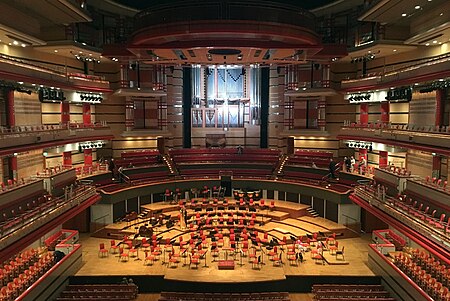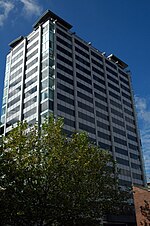Symphony Hall, Birmingham

Symphony Hall is a 2,262 seat concert venue in Birmingham, England. It was officially opened by Queen Elizabeth II on 12 June 1991, although it had been in use since 15 April 1991. It is home to the City of Birmingham Symphony Orchestra and hosts around 270 events a year. It was completed at a cost of £30 million. The hall's interior is modelled on the Musikverein in Vienna and the Concertgebouw in Amsterdam. The venue, managed alongside Town Hall, presents a programme of jazz, world, folk, rock, pop and classical concerts, organ recitals, spoken word, dance, comedy, educational and community performances, and is also used for conferences and business events as part of the International Convention Centre. In 2016 the Concert Hall Acoustics expert Leo Beranek ranked Symphony Hall as having the finest acoustics in the United Kingdom, and the seventh best in the world. Proof of these fine acoustics is that a pre-opening acoustic test demonstrated that if a pin was dropped on stage, the sound could be heard from anywhere in the hall.
Excerpt from the Wikipedia article Symphony Hall, Birmingham (License: CC BY-SA 3.0, Authors, Images).Symphony Hall, Birmingham
Centenary Square, Birmingham Ladywood
Geographical coordinates (GPS) Address External links Nearby Places Show on map
Geographical coordinates (GPS)
| Latitude | Longitude |
|---|---|
| N 52.478611111111 ° | E -1.9105555555556 ° |
Address
Symphony Hall
Centenary Square
B1 2EA Birmingham, Ladywood
England, United Kingdom
Open on Google Maps










